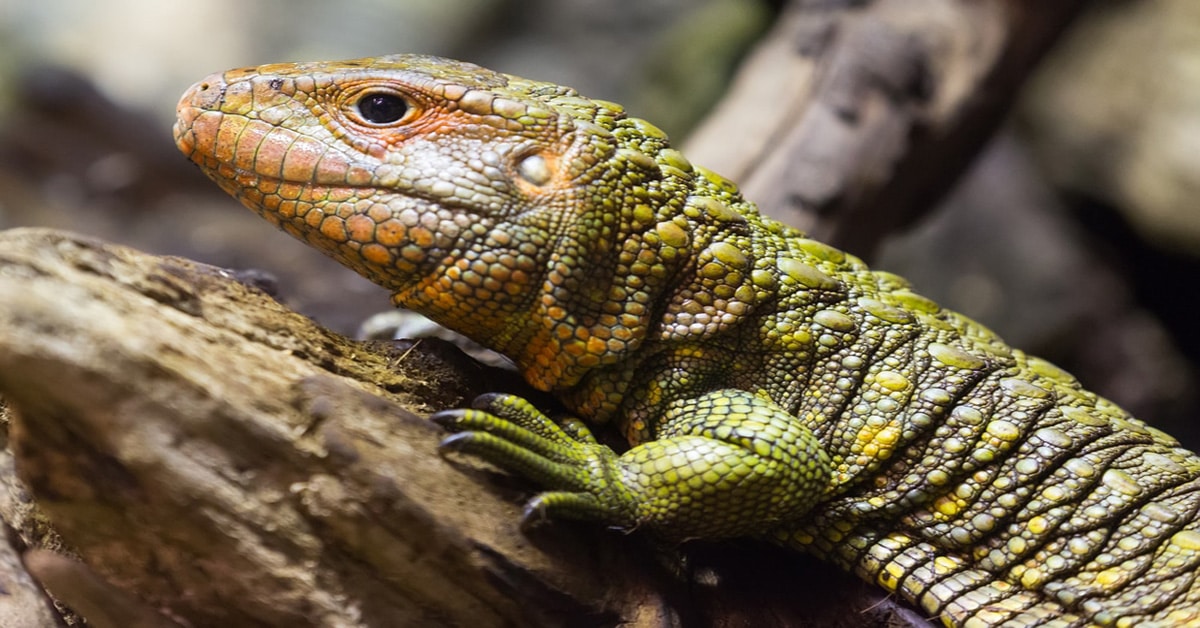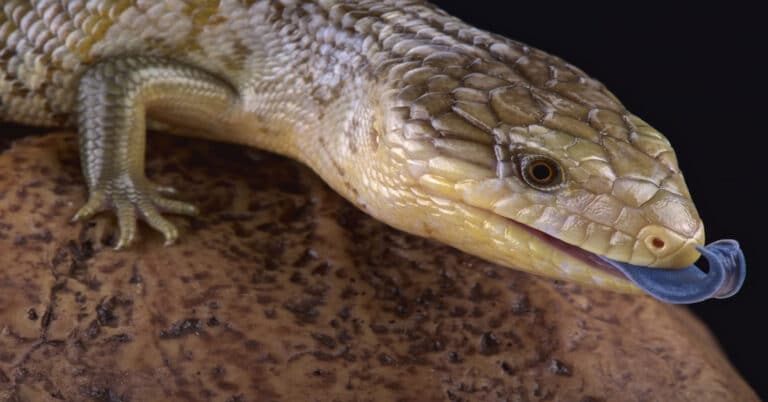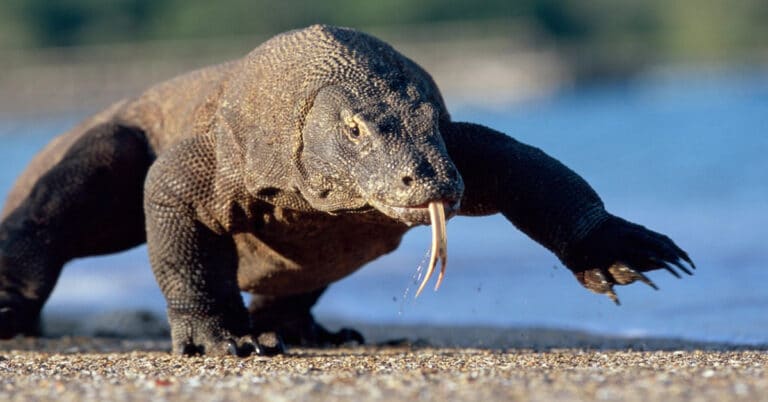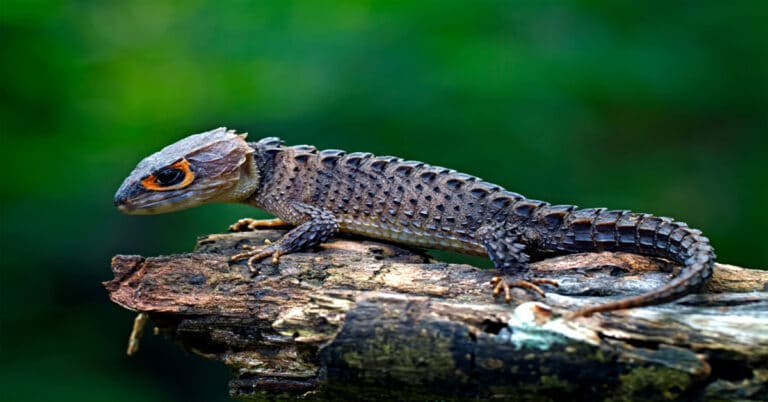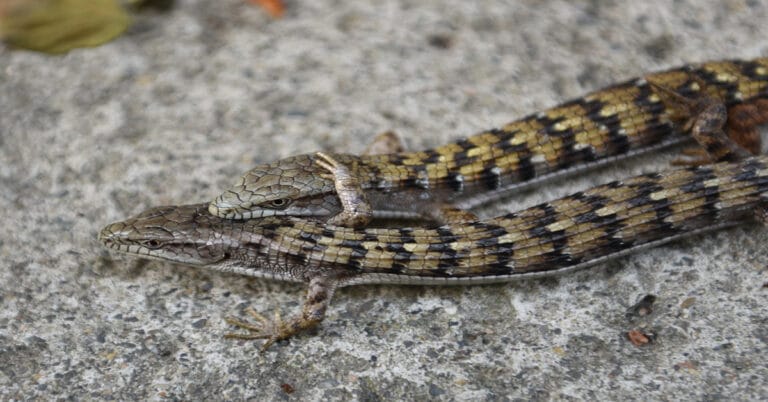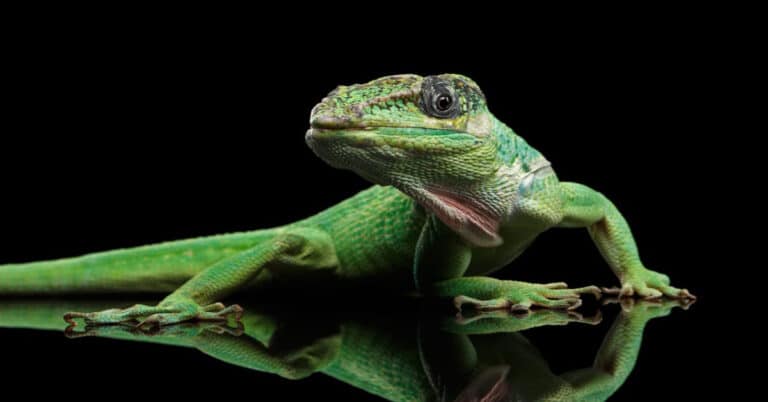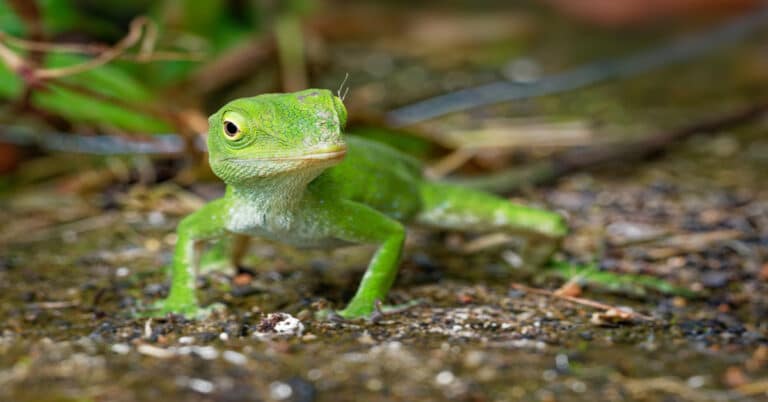Caiman Lizard
Scientific Classification
| Kingdom: | Animalia |
| Phylum: | Chordata |
| Class: | Reptilia |
| Order: | Squamata |
| Family: | Teiidae |
| Genus: | Dracaena |
Alligator lizards of 67 varieties widely spread all over the world, of which 8 varieties found from Canada right down through Central America, are the common varieties found in Algeria, North America and Gerrhonotus.
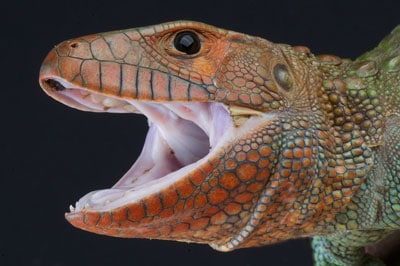
Habitat
These lizards spend most of their time in or near water when most lizards live in dry habitats, The habitat of these lizards is forest-swamps and areas adjacent to rivers where they have access to vegetation. They spend the daytime lying in the sun, on roots or overhanging branches. During the night, they usually conceal themselves in bushes and trees. The Caiman lizard is native to the Amazon Basin, Habitat loss is the biggest threat to their existence Poachers hunt them down for their skin.
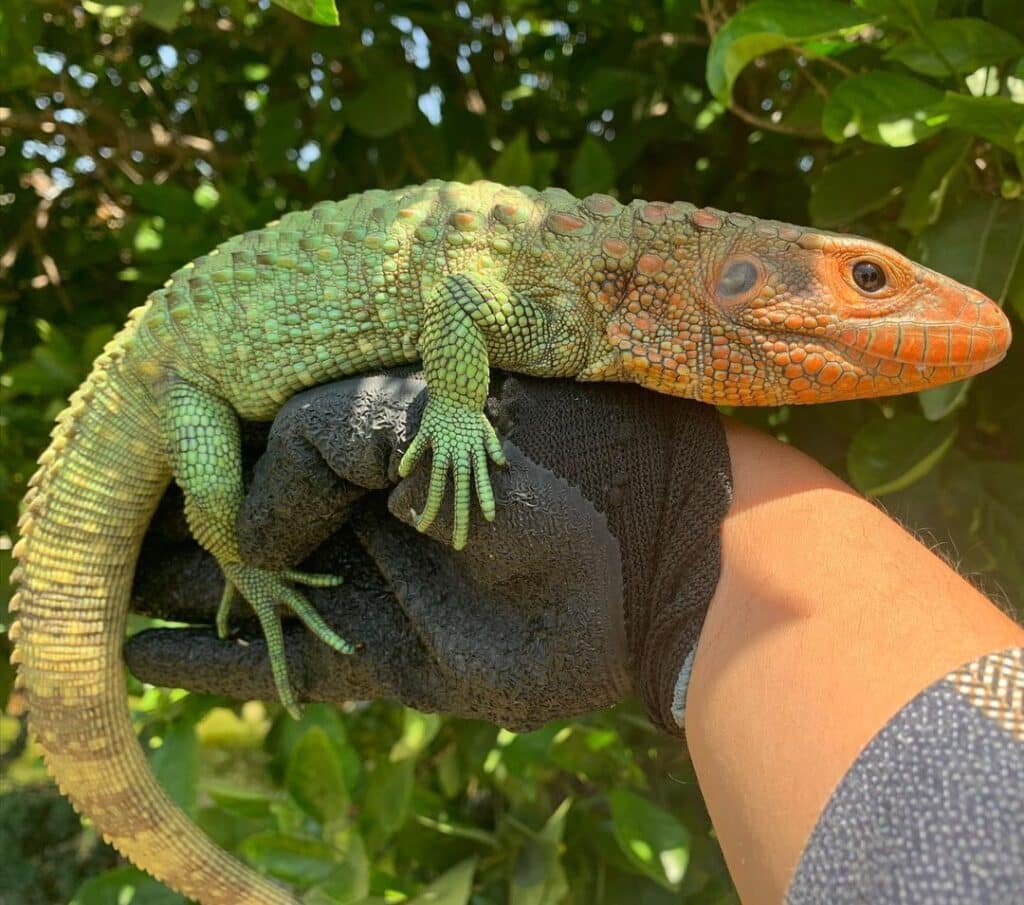
Anatomy
Physical adaptations to the environment and a specialized anatomy offer interesting attributes about the caiman lizard. Their coloration is interesting. Both males and females are green, and have reddish orange heads, The male’s head has a broad and redder configuration. Both sexes also have powerful tails that resemble whips. They help them to swim and also assist them in self-defense. You can find modified scales in the tails of male caiman lizards. They have very strong molar teeth, essential for assisting them with their hard-shelled creature diet. These lizards grow to between two to four feet and weigh around three to six pounds.
Behavior
Caiman lizards make use of their aquatic surroundings interestingly and Spend most of their time lazing over the water. When something disturbs them, they drop down at once and scoot. When they directly encounter predators, they turn aggressive, attempting to bite or lash their assailants with their tails. These lizards are neither solitary nor social animals.. In captivity, however, they live together quite peacefully and they interact with animals like turtles, fish and even other lizards.
Diet
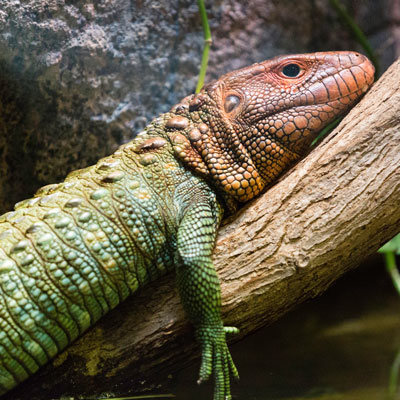
The Caiman lizard has a limited diet in its natural habitat. They subsist almost entirely on clams, apples and snails.. When they eat snails, they have a habit of tilting their heads back for the snails to slide backward into their mouths, where, they crush them with their powerful molars and spit the shells out. In captivity, along with snails, caiman lizards also feed on fruit, fish, ground turkey, rodents, and hard-boiled eggs. Babies eat insects and crickets. They also need minerals and vitamin supplements.
Features
• The caiman lizard is s species of lizard. They are medium sized. They are natives of the jungles of Latin America. The caiman lizard is is one of the biggest lizard species in America. Caiman lizards are powerful creatures.
• The caiman lizard inhabits the rainforests and swamps of South America, Brazil, Ecuador, Colombia and Peru. You can spot Caiman lizards in flooded areas since they are aquatic animals.
• The caiman lizard is a large and powerful. Lizard. They often grow up to 120 centimeters from snout to tail. The Northern caiman lizard is the only species of caiman lizard we can find on the continent. Since the caiman lizard spends most of its time either in or near water, its body has adapted in many ways to help it to lead an aquatic lifestyle.
• Caiman lizards fall in the realm of large carnivores. They prey on other animals only to get nutrients. The caiman lizard’s main food source are snails. They also feed on other invertebrates like crabs and insects. Occasionally, they eat larger animals such as rodents, fish, and frogs.
• Because of its larger size and semi aquatic and part tree-dwelling way of life, caiman lizards have few predators within their natural habitat. Large predatory mammals like jaguars do hunt the caiman lizard along other large reptiles which include crocodiles and snakes.
• There is little information on the breeding and reproduction of these lizards, but they seem to behave as other species of large lizards do. Post mating, the females dig holes in the riverbank and lay their eggs in them. They cover these holes to protect the eggs from predators. The babies remain independent when they hatch, Their lizard parents do not give them ant parental care.
The caiman lizard does not face the immediate threat of extinction, though their populations do decline in certain areas, mainly because of habitat loss that result from high levels of pollution and deforestation.

Having discovered a fondness for insects while pursuing her degree in Biology, Randi Jones was quite bugged to know that people usually dismissed these little creatures as “creepy-crawlies”.

